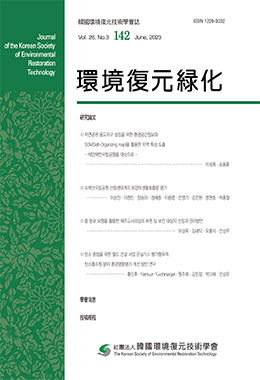The purpose of this study is to estimate carbon dioxide emissions from soil microbial respiration by forest type of Sobaeksan National Park. As a result of estimating the annual soil microbiological respiration volume by forest type in Sobaeksan National Park, broad-leaved forests, coniferous forest, artificial forests were similar to around 19.5 CO2-ton/ha/yr. In the case of coniferous forests in sub-alpine and grassland near Birobong Peak, 12.2 CO2-ton/ha/yr and 8.1 CO2-ton/ha/yr, respectively, were lower than general forest areas. And as a result of analyzing the changes in soil microbiological respiration rate according to forest type in Sobaeksan National Park, the soil microbiological respiration rate in coniferous forests, broad-leaved forests, artificial forests, and sub-alpine areas was the highest in the July survey in summer and the lowest in November in late autumn. The change in soil microbial respiratory volume according to the measurement time in Sobaeksan National Park was the highest between 12:00 and 16:00, when the soil temperature was generally the highest among the days. It is known that the soil temperature is relatively low and the amount of soil microbial respiration decreases during winter, and the change in respiratory volume over the measurement time during the day was the smallest in November, when the amount of soil microbial respiration was relatively smaller than the May-September survey. However, this study has limitations in revealing the causal relationship of various environmental factors that affect the soil microbial respiration. Therefore, it is suggested that long-term research and investigation of various factors affecting soil respiration are needed to understand the carbon cycle of forest ecosystems.




